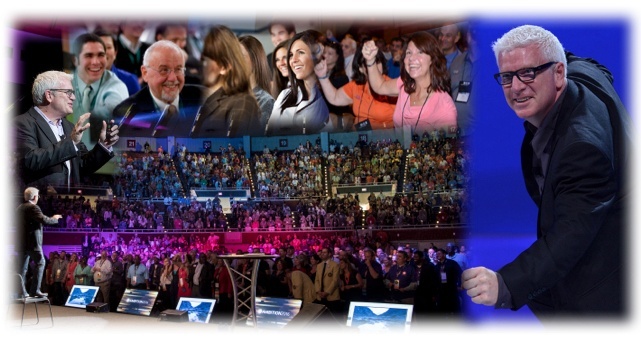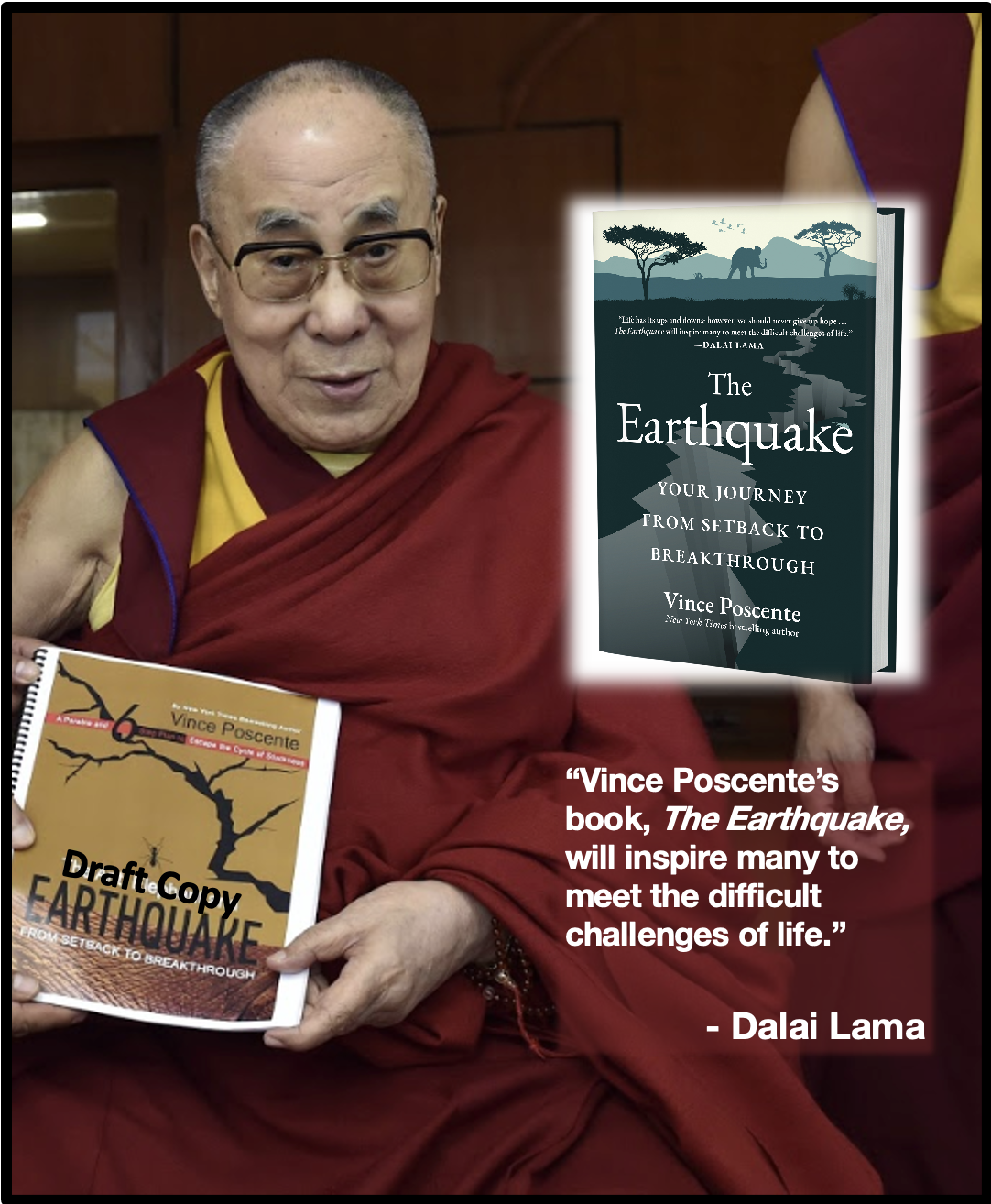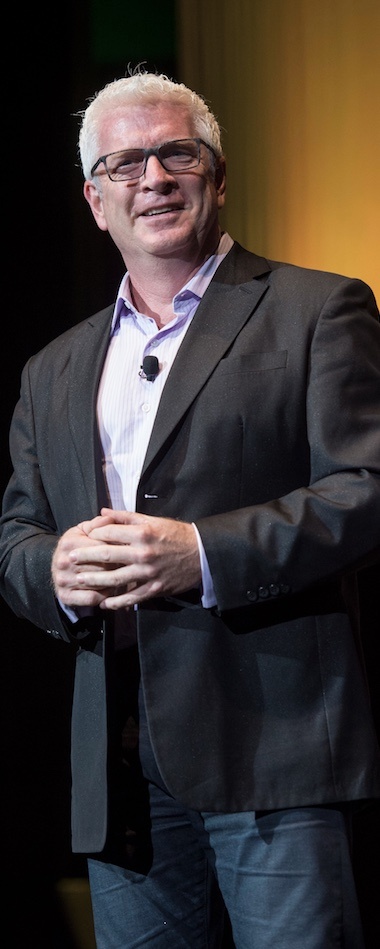Jamaican bobsledder, Olympian and professional speaker, Devon Harris interviews Vince Poscente, motivational keynote speaker and speed skiing competitor in the Olympic Winter Games. His Podcast Interview from Keep on Pushing is transcribed here.
You will learn how to:
- overcome obstacles,
- maintain resiliency and
- keep having fun along the way.
Video Link
DH: Hey Guys, this is Devon Harris. Welcome to Keep on Pushing Radio and of course I am your host. And this is where we share….work to share insights and ideas that are going to help you to Keep On Pushing and live your absolute best life. So look man, if that's something that you're even remotely interested in; guess what? You're in the right place man and we have an amazing guest today that I think you're going to find a lot of value in right?
So I think he is one of the most accomplished persons that you'll ever meet. I'm not even sure where to start you know! In my mind he's a crazy guy because, he Speed Skis. I mean who does that? Well obviously he does right?
This guy went from being a recreational skier to competing in the medal round of the 1992 Albertville Olympic Games in four short years! I mean that is pretty remarkable. And today he is one of the most in demand motivational speakers you'll ever meet you know? He gets a chance everywhere, anywhere he gets someone who wants to listen to him. To share his insights on extraordinary goal acceleration. He talks to people about being resilient and you know overcoming obstacles. And obviously that's not from reading from a book that's his life.
Those are his experiences right?
He's an award-winning sales and marketing executive, formerly with the world's largest real estate investment firm. The guy is an award business owner, he has a Masters in Organizational Management. He is inducted in two Speaker Halls of Fame. Actually, he is one of only four people on the entire planet inducted into both the Canadian and the USA Speaker Halls of Fame. He is a New York Times bestselling author. Seven books.
And in his spare time, he finds time to lead or participate so far in six expedition to the Himalayan mountains. I'm so happy to have Vince Poscente on Keep On Pushing with us today.
Welcome Vince.
VP: Devon it's a treat to be with you. Thanks for bringing me on your show.
DH: Yeah man! It's great to have you. I have to tell you a story, I want to start with a story about you that you don't know.
VP: [laughter] Okay.
DH: Go figure, so it's 1997 and I'm in Park City racing and qualifying for the Nagano games in Japan 98 right? And, you know I had intentions of becoming a motivational speaker after the Olympics. So the people I was working with… I'm like hey after the games I want to be a motivational speaker. So I am in my room in Park City and my agent at the time comes in my room, and he sticks a V.H.S. into the V.C.R. So you know obviously it's like 100 years ago… it's old technology right?
VP: Yeah.[laughter]
DH: On the screen is a motivational speaker, some guy called Vince Poscente on a chair. You were mimicking the start a of a speed ski race and my agent goes can you do that? I am like yeah, I could do that!
VP: [laughter]
DH: I go to the Olympics and I get back and I started speaking. So yeah Vince, you have been part of my speaking career from the beginning.
VP: That's great. That's why we do this.
DH: Yes! Yes! Indeed. So how did you yourself get started in speaking?
VP: I remember moderating the Christmas play in kindergarten. [laughter]
And I was saying whoa! This is kind of fun. But anyway, I ended up being a valedictorian for high school. And speaking to 2500 people and I really for some reason, you know how there's something burning inside you? Think I just got to do this. I just have got to do this.
DH: Yeah.
VP: And it was it was not about the attention it was about a sense of needing to contribute. To give people hope, to give them direction. To say hey you know, grab it you know, make it happen. And then over time from that speech and the graduation speech to probably the Olympic Games.
It always kind of stuck in the back of my mind. In fact I saw a politician speak to 5000 people in our province of Alberta. His name is Peter Lougheed and he captivated the audience and I went that's it! I want to be a politician. [laughter] I dodged that bullet. I decided that maybe politics didn't have to be the venue to speak.
When I was racing I thought hey, if I win this gold medal you know I could be a speaker. I didn't win the gold, I mean it wasn't even remotely possible it seems looking back. Because I had people that have been racing since their whole life. I ended up being ranked top 10 in the world, but in the finals in the Olympic Games I placed 15th. And it was 18 months after that I started looking at the speaking business. I have a saying that, ‘A good idea won't go away.’ And so the speaking thing kept popping up and popping up. So I eventually poked around went to the National Speaker's Association convention in Washington D.C.in 1994. Two years after I competed in the Olympic Games, and that was really the beginning of it realizing how good professional speakers were. I mean there are a lot of people who say hey I would like to be a speaker, maybe they're good at giving toasts at weddings. But I'm telling you, to be a professional speaker is a whole different deal, as you know.
DH: Yeah! Yeah! I get that all the time as well. People go… oh you're a speaker! How do I get into that? Right and it sounds like oh it's a hobby that they want to pick up, they don't recognize you know the level of expertise. And on that note, I mean how do you find as an athlete right? You found the correlation between your athletic career and your speaking in terms of you know preparation, technical stuff and working on your craft you know. Finding sponsors as a speaker, as an athlete finding clients. Are there any correlation? And how does that experience you think impact your other businesses as well?
VP: Right! Yeah! I look back over what got me from recreational skier to the Olympics in 4 years, is the exact same formula that I used to get in the speaking business. And, in a nutshell, it was five C's. It was Clarify where you want to go. Have that emotional connection, when I started I was not very good. The second C is Commitment. We all know what commitment is. Because you can say “yeah I'm in” and you put your money down or you give your word.
But it isn't until you get into it you realize the level of commitment necessary. So that didn't surprise me when I got to the speaking business.
In fact, at that National Speakers Association Convention there were 2000 professional speakers there. And one guy got on stage and he said, “In this business there's no competition we can all do this.” I looked around and I'm like “Heck yeah there's competition! [laughter] Just look around.”
Just to raise your level of commitment that is necessary.
The 4th C, Consistency, is something I learned from sports. A lot of athletes and people in business for that matter try to do what the competition’s not doing. But I found that when you do what the competition's not willing to do it's a game changer. What I learned in sport, in order to compete for Canada or the United States, or other countries for that matter, there are Olympic qualifying standards. In Canada it's either you have to be either top half or top 16 in the world. I figured that I had to be not do what the top 16 in the world were not doing, that's impossible. They have been racing since they are four, five years old. But I could do what they're not willing to do, and so in the speaking business I did the same thing. I looked at the top speakers and what are they not willing to do. You do that consistently - that's a game changer!
DH: Yeah.Yeah.
VP: And then the fourth C: Confidence. You know if you're not confident in sport, no matter what skill level you have, if you don't have the necessary level of confidence you won’t reach your potential. The same goes for speaking. If you stand on a platform, a whole bunch of confidence is necessary.
The fifth C: Control. As an athlete or a speaker I realized you can't control the environment. You can't control the audience, or in sport, you can't control what you're stepping into. But you can control what you bring to that; meaning be deliberate about the routines prior to any ‘race run,’ speech, negotiation or anything that requires your very best performance for a desired outcome.
I used the same 5Cs in writing books and ended up on the New York Times bestselling list for that reason. Remember - Clarity, Commitment, Consistency, Confidence and Control.
DH: Yeah! Obviously it has worked and the important point here, our lesson here I think for all of us is that these C's. These five C' aren't just a one time thing. It's an on going thing right? You clarify your vision but that vision keeps you and pulls you and gets you to go. Commitment is not just ok, I am committing. You literally have to commit every single day to that vision that you have clarified. As you do that consistently obviously you raise your confidence level and that allows you to control as you say what you bring to the table. So awesome.
I guess I have to ask you man! Are you an adrenaline junkie? I mean, I read that you hang-glide, sky dive, swim with the sharks.
I mean apart from the fact that you get a rush of adrenaline when you do these things. Are there any other similarities? And again, I'm always curious about the lessons that we can take from our respective experiences and apply to all the areas of life.
VP: Devon the optics of it are; Yeah I am daredevil or an adrenaline junkie. But the truth is, what really drives me is, if there's something that causes fear I want to supersede that. There's no better feeling for me to supersede fear. It doesn't have to be a speed thing or an adrenaline thing. It could be shoot! I could see somebody I want to talk to, talk to at a party or a meeting or something. I go, oh shoot! Maybe they're too busy or whatever. I say to myself, Wait! That's fear. I have a healthy distaste for fear. Fear drives me bananas so to supersede it, to become bigger than the fear is something. That's what drives me, that's what I get turned on by is to overcome fear.
DH: Yes! That makes absolute sense. They say, “Do the thing you fear and the death of fear is certain.” So as you take your fear head on as it were. You gain control over it you. So I also read that you were a luger at one point and that you go down essentially a bobsled track sticking your feet miles at 80 mph.
VP: [laughter] Yeah.Yeah.
DH: How did you then transition from that to speed skiing?
VP: I luged for a couple years, but I quit. I luged over in Lake Placid. Have you ever bobsledded in Lake Placid? I'm sure you have.
DH: On the old track.
VP: On the old track, yeah me too! Oh yeah! You're still alive that's a good thing. [laughter]
DH: We survived. We belong to a very elite club.
VP: Yes! Oh Goodness! Well luge, I learned about visualization and imagery. But I also learned that if you don't commit. If you don't really step into something that's not guaranteed and again it was that fear thing I guess overall. I quit luge and I watched buddies of mine marching in the opening ceremonies in Calgary.
DH: Yeah.
VP: And I went… you know what? That's never going to happen again! I am never going to have that feeling of the regret that I did at least try.
DH: I think I read that you allowed your coach to dissuade you from continuing luge. Said you were not going to be good enough, you wouldn't make it. So, you believed him?
VP: Yeah!
DH: So yeah, so you got a good taste of that pain of regret.
VP: Yeah! Yeah! You can get an outside voice that says it's not going to happen. And then you go oh well, you are an authority you would know and I'll believe you. We hear countless stories of people saying that may be a motivation for some people. For me, I was like, Oh ok, good point. But that regret is something I never going to happen to me again, EVER!
DH: People get motivated by a number of different things and I think one of them is you know, having an experience that you never want to experience again. And an event you never want to experience again. Kudos to you because there are people who you know, I think all of us have regrets of one kind or another. And people have been man I wish I had invested in that stock, or taken that job or not taking that job.Wish I had asked her to marry me. Or gone out on a date or that kind of stuff right?
It doesn't work out all that well and people beat themselves up. But kudos to you. I think you instead of kind of, you know focused inwardly you focused outwardly. And decide to take action and moved on right? So that's commendable.
DH: So it's 1988, February 1988, to be exact and you're home watching T.V. or do you say 'Telly' in Canada? I'm not sure. Or is just our British friends. You are watching the opening ceremonies on T.V. and you're watching these four Jamaican guys, these misfits walked in the Opening Ceremony. You are watching Eddie the Eagle marching with the British team, and perhaps worst of all though you're watching your friends.
VP:Yeah!
DH: Yeah! I mean what were you thinking then?
VP: Well. Devon the truth be known I had a ticket for the Opening Ceremonies and I lived in Calgary. I was in the stands with a glove on holding a ticket watching these buddies of mine march in Opening Ceremonies. You know what? I'm not saying I know I would have made the luge team. I'm not saying that, I'm saying, I don't know!
DH:[laughter] Yeah! You can't know unless you try, but then you know you got the coach to convince you not to.
VP: I was scared. I had a more guaranteed path. There's one guaranteed path or your heart can lead you. And I think one of the lessons I need to learn in life is to follow my heart more and less about what makes sense [laughter]
Because some stuff makes sense but this heart-stuff is what drives us. And I, and I hope this is correlating to people listening to this or watching this. You have intuition or what I call the emotional buzz. And the emotional buzz is based on when a thought creates a physical reaction.
And there's actually science behind this. There was a study sourced by Dr Lee Pulos. I first heard it through him and he said in a second of time your conscious mind processes with two thousand neurons. But in the same second your subconscious mind below consciousness is processing with 4 billion neurons. So, two thousand conscious, four billion subconscious. Who's in control? Right?
Your conscious mind might say, I want to go in one direction, but the subconscious mind might say, Nope, we’re going in different direction.
I wrote a book called The Ant and the Elephant. The ant is the metaphor for the conscious mind. The elephant is the metaphor for the subconscious mind.
How do you align conscious intention and the subconscious agenda? How do you get from where you are today, to where you want to go? And that's what this book's about. That's what life's about. How do we get to this oasis? Identify your emotional buzz. Create better results in your life.
DH: Yeah! And you know you mentioned the guaranteed path, and I think all of us you know come to that crossroads in our lives, I think , where there's this kind of guaranteed path that makes you know like total sense. And then there's this other part that is being led by your heart right?
And your conscious mind is saying I really want to go but you are not so sure. Your subconscious mind which is even more powerful and conditioned to go along the guaranteed path because it's meant to keep you safe.
A lot of us unfortunately kind of follow that guaranteed known path, as opposed to following our mind. And getting our conscious mind to tell our subconscious mind to align because we're going in this direction.
VP: Yeah.
DH: When we do that as you said follow your heart, some amazing things happen. Not that you know going down the guaranteed path would not been good.
VP: Right.
DH: But I have found from my own experience is that varying off into the weeds because that's where my heart leads or compels me to go.
VP: Right.
DH: Create some amazing experiences right? I think that might be part and pass your thinking. This idea of self-mastery, life mastery which you teach a lot.
VP: Yeah! The life mastery piece is being able to really understand how you can continue moving forward and not have regrets at the same time. It's like, it's the yin and yang of being able to go in the right direction. Being able to say hey, I've got a path that I would love to be able to go on. In the same breath I have security and safety that's necessary you want to feel safe. It's so much more consumable. I call it the mathematics of opportunity. Just open a door in front of your. Because when you open a door you look and you go, Oh! there's another door.
Choose. Why don't you look at that door and then you just keep opening the doors until you go, wait a minute this is a great place to be.
We're in a society of instant gratification and we want to get results quicker. And we'll hear a story like this recreational skier to Olympian in four years. Well you know what? That a was a long four years that was really hard. And it was uphill the whole time. You pace yourself. I mean it's life. Either you just sit in the sofa and watch Netflix and binge until you run out of popcorn. Or you get off the sofa and you say, What's on the other side of that door?
DH: Yeah! But yeah, absolutely right. So you know the ying and the yang of kind following our desires or direction that our heart is pulling us in or pushing us in. Versus this kind of guaranteed path that we are all conditioned to follow right?
And those are some of the similarities in our stories because you go from you know, having a successful real estate career. To kind of dropping it to go chase you know this hare-brained idea of being an Olympic skier in 4 years. Talk me through that, kind of your thought process. I mean it was a big risk, why did you take it? How were you able to pull it off?
VP: You know what Devon, one story I don't really share that often because it complicates the elegance of a keynote .[laughter] It was the opening ceremonies in Calgary where this thing of regret was most intense.
DH:Yes.
VP: But there's this notion that we make decisions like this blinding flash of brilliance or this epiphany. This Hollywood version of I know the direction I need to go and it doesn't happen that way with the human condition. Big decisions take time. It was months after I actually ended up going to the Olympics Seoul. And I was going to assist the athletes commission for the I.O.C. And I had more off time than I expected. I ended up going to the taekwondo event in Seoul. And the ticket lasted 8 hours, so I went when the doors open and realized this was going to go all day.
Picture it. I'm sitting in a dark remote part of this stadium and there's not many people around. And athlete after athlete after athlete stepped out onto the mat. That was a time when taekwondo was a demonstration sport. I also knew in the back of my brain speed skiing was a demonstration sport in the Olympics and Albertville in 3 and a half years later. And I just realized you know what? You have to try, you have to engage. And you get to these moments of truth where you say, I must make a decision. And, of course, there was fear. It was so unrealistic to try and get to the Olympics. I never ski raced before. I knew nothing about ski racing. [laughter]
I was a recreational skier and yet there was 2 things that really can help you when you make a decision like this. One was you just take a step and see what happens. Open that door. See what happens. The second piece of advice is, have fun. I'm not going to do this if this is not fun. I mean that was one decision I made very early on; at 26 years old. I'm not going to do this unless it's fun, and so making it fun and then looking at the next step. It all came together. It was amazing. And, most of all, do what the competitions not willing to do.
That was great, a great way to be able to start to do things like; mental training, biofeedback and sensory deprivation, float tanks. Over two hours a day of mental training, things other athletes just weren't willing to do.
DH: We talked about leaving the comfort zone of your career, starting out embarking on this journey to the Olympics. The fear of all that entails right? And then obviously doing something that the competition wasn't willing to do like strapping yourself on top of a vehicle! [laughter]
VP:Right![laughter]
DH: So you know talk about innovative thinking. A lot of times when I speak to kids and I show them how we train in Jamaica. Often say hey, remember that God gives you a brain and you're supposed to use it to think. And if you have a goal, as impossible as it might seem if you really start to dial back and think about all the resources that you have at your disposal, you can find a way to make some incremental progress. And even stepping outside the box a little bit, like as you did to get on top of a car.
VP: Yeah.
DH: What was that like?
Not physically being on top of the car but you know, how did you arrive at that conclusion? That hey in order for me to train and have a chance to get a sense of what it feels like are going down the side of a mountain. I need to get on top of a car.
VP: I tried to get in a wind tunnel and I couldn't find one to get into, early on at least. And so when you hit a road block you don't quit you know, what else could I do that would be? And then a buddy of mine was a race car driver and he says I care more about you scratching the top of my car than you falling off my car so. [laughter]
I didn't scratch his car but the idea to get on top of his car and go to a remote part of just outside of Calgary and it was highly illegal.
DH: It had to be.[laughter]
VP: Yeah. But anyway and you know to a degree it was dangerous but I did have a rope strapped through the windows to either hip. I used something called a kicker harness that climbers use. And there's ring on either side of the kicker harness so ran a rope from one ring through the windows of the car to the other ring and then cinched it up, so that if I did pop off it would just flop until they slowed down. [laughter]
DH: I always say hey you know when it comes to taking risk and overcoming your fears. One of the things that you have to assess early on is that hey, if things go badly, like worst case scenario…..are you willing to live with the consequences?
VP: Oh! I am, sure.
DH: If you're investing in a business or you are switching cities because you need to change jobs or career and things go badly can you live with the consequences? If you can then it's a risk worth taking right? Because it's not just about blindly and unintelligently taking risk. And obviously you took precautions and I have to believe that somewhere in the back of your mind you were willing to live or not live with the risks. [laughter] With the worst consequences.
VP: Yeah, from a very early age I've been a person that has as strived on minimizing risk. The safety industry is an industry that I work with quite a bit. Organizations want everybody to be safe and they gave them a stack of procedure manuals. But what really works is the neuroscience of safety. Being able to humanize the environment that they're in and say hey I want to go home to my family tonight. And so that's moving people forward and embracing it that way. It really is being able to have an emotional connection to where you want to go. And minimizing risk at the same time. And magic, absolute magic happens when you combine those 2 things.
DH: I agree, let's stay on the subject of fear for a bit Vince. I tell people all the time I'm a 3-time Olympic bobsledder. I have driven sleds in the Olympic. I am not necessarily a fan of speed and height. [laughter] Yes, so it's kind of hard sometimes to make those correlation. But I certainly can remember the times when I am racing and I would get to the start line and the fear begins to creep in. Wow! You might crash, and I kind of see it as this other voice that I tell to shut up. Right?
How do you deal with those moments?
VP: Right.
DH: How does dealing with fear in your skiing career, does that….do you see it impacting or affecting other areas of your life?
VP: Yeah huge. Alright so I'm going to give you a technique that is phenomenal.
It's a three-part technique.
Part one, you must have an emotional buzz of what you want to accomplish or where you want to go. It could be you know, having a cottage by the lake with no mortgage and hosting a family reunion there. In this Olympic story, it was marching in the opening ceremonies of the Olympics. Or your own business or living off a massive retirement fund.
Or, in my case, a New York Times bestselling book it was being able to have you know hundreds of thousands if not millions of people reading this book and being transformed.
Have an emotional connection to your goal. Now once you have your emotional buzz, then any time something that causes fear or let's just call it negativity right?
Part Two: Any time there's negativity ask yourself, Is this taking me closer to that emotional buzz? Or further away?
The negativity could be a comment somebody makes. Maybe it’s an internal dialogue that's going off that's saying Hey! hey! hey! hey! Wait a minute, you got to be safe can't do this.
Or maybe the thought or comment is taking you closer to the emotional buzz, then that’s great. Is this thought or comment something that's going to serve you? If it's taking you further away from your emotional buzz, then your ant and elephant (your conscious and subconscious mind) have a conversation. Quietly, internally ---
Part Three: Say, Thank you. The ant says to the elephant, Thank you that's not part of my vision. That's not part of my clarity of where I want to go. Where I want to go is…” and then you imagine your emotional buzz in all its detail. Imagine, visualize, experience the 5 senses of seeing it, smelling scents, tasting the champagne, hearing the sounds typical in that setting, feeling the textures like handshakes, hugs, trophies, certificates… AND… most of all, the 6th sense of emotion… of gratitude, satisfaction, relief, joy…
This technique is basically acknowledging the subconscious mind for throwing that thought, that fear out to you.
DH: Hmm-hmm.
VP: First you identify it as positive or negative. Helping or hurting you. Then you acknowledge it with gratitude. Finally, pivot from that fear to what, or where, you really want to end up. Is it that cottage that’s mortgage free with the family reunion? Or the New York Times bestseller? Marching in the opening ceremonies of the Olympics? Your new business? Your massive, retirement nest egg?
Whatever that emotional buzz is for you. Go through the five senses. What does it look like? Smell like? Taste like? Touch? Sounds? You have an experience of all five senses and the emotion that's attached to that. Which would be satisfaction, or joy or gratitude. If you have an experience of what that is, you've completely eliminated any pattern of negativity. You’ve interrupted that negativity and pivoted on to where you want to go.
DH: Yeah, you're making this strong emotional connection with where you want to go. That's kind of where your thoughts will eventually start centering and you get there.
VP: Yes.
DH: Speak to me a little bit Vince, about what I am going to call your ‘Less’ philosophy you speak about fearless and selfless. Will you speak to me about that a little bit?
VP: Okay, that all came from after the Olympic games and the speaking business and all that of course. Like anybody I'm a curious guy in 2006 a guy invited me to climb the mountain in the Himalayas. I said I have never climbed a mountain [laughter]
He says you know it's a piece of cake, we will do it together. Sure enough we climbed the mountain. We summitted the mountain that’s called Chakri Peak. It's never being climbed before. We touched the top of this mountain and overtime I went back to the Himalayas and then back again. I created something called the 'Heroes Climb'. There are 5 qualities of heroes, and I'm not talking about the iconic heroes that we all have like Gandhi. Or there's the celebrity heroes, let's say Sully who landed a passenger jet in the Hudson River. I’m Canadian, Wayne Gretzky would be a sports hero. But what I'm talking about are every day heroes. These are people, who, by their example, elevate the rest of us. In fact there is a saying 'When the tide rises all ships rise'
DH: All boats rise.
VP: Yeah all boats rise, so to be able to be around people that elevate us through their character, these everyday heroes. I had people nominate their hero so that we would go back to the Himalayas climbed a mountain that had no name, and name that mountain after the everyday hero. And so the five qualities are: Compassionate, Selfless, Fearless, Humble and Persistent. Could we all be more compassionate? Could we all be more selfless? And have less fear? And to be more humble and persistent as well. Goodness gracious! That would be a phenomenal life lived if you had all those five character traits.
DH: Imagine the number of people you would have impacted as well along the way.
VP: Yeah! Yeah! So to live those character traits, I'm not calling myself a hero at all.[laughter] In fact, I'm constantly looking for people to draw inspiration from. And we named the mountain after a guy named David Maish. We call it 'Maish Mountain.’ In high school, he broke his neck playing football. He went on to be an Entrepreneur, Dad, great Husband. I have met him a few times. He's a phenomenal individual. His example is inspiring.
We named another mountain after a young girl named Hana France. Hana was adopted out of Korea, kids were pulling out her hair, she had deformed hands. She went on to be a scholarly young lady. She's so inspirational.
Then most recently we named a mountain after a young man that has overcome leukemia, Gavin Kilcullen. We named his mountain, Kilcullen Peak.
DH: That's amazing! So we're wrapping up here. You're charging down a mountain you know, you are heading down the side of a hill. You're flying towards a speed trap, you're going well over 100 mph. You're focused, you're trying to stay stable you don't want to catch an edge. Because if you do you know, you're going to end up like that guy in that promo for ABC Wide World of Sports. You're going to be experiencing the agony of defeat.
VP: Right. Remember that?
DH: Inside there, right? We all live and you wrote about the 'Age Of Speed'. That's the world we live in today, you lived in the age of speed going down the side of a mountain. We all are living today, everything is moving faster than the speed of light today.
How do we stay stable Vince? How do we stop ourselves from catching that edge?
VP: I think you can relate to this as a bobsled driver. The second you become overwhelmed by the speed, it's the second you lose control. [laughter]
So the question is 'How do you not become overwhelmed? And it has everything to do with being present and fearless at the same time. And being fearless we're all going to have fear, but to just fear less as we move forward. And being present means you're not worried about afraid of anything that happened in the past.
You are not afraid of anything that will happen in the future. So to have those two things happen at the same time, means that you're going to be able to be happy. I went through a period of time where I was just really not happy. I don't know if you experienced it after the Olympics it's a bit of feeling lost.
DH: Yeah.
VP: I just made a decision to be happy now just now. Just right now.[laughter
Be happy now, be happy now. And that made such a massive, massive difference. Then we have today in the age of speed we have to take more responsibility for technology. Meaning you got an iPhone it interrupted me while I was on this interview with you right?
I mean frequent e-mail interruptions reduce your I.Q. two and a half times greater than the drop in I.Q. from smoking marijuana.[laughter] It’s like you're better off buying a bong than buying an iPhone.[laughter] And so you know, these interruptions of technology if we allow it to interrupt us, then we're not taking that stewardship for our time.
That's another piece, it's just a process right? You just got to keep saying how can I make this better? How can I make this better? How can I make that better? You will get there!
DH: Yeah. It's amazing and it's enlightening. It's been such an honor man to be hanging out with you, my fellow Olympian from Albertville 1992.
VP:Yes.
DH: A guy who I looked at well you know I could I could do that. I'm not going to stand on my chair, when I'm not on stage, but you know I drew inspiration from you.
VP: Thank You.
DH: People ask me all the time hey so who inspires you? And it's everybody, I try to draw inspiration and knowledge from everybody. And so it's such an honor to have you here on Keep On Pushing. Because again I think you have being able to share some insights and some ideas, that are going to help our listeners get to the next level in their lives.
VP: I hope so. I hope we all do that. I hope we can help each other.
DH: Indeed! Indeed! So I am only a phone call away if you ever need a bobsledder. Not to go down a ski run [laughter] That's not going to happen. We will have anything else, it's all good.
VP: Devon you are good man, and thanks for putting on this Podcast. It's good work, and you are making a difference one podcast at a time. So thank you.
DH: Thank you so much.






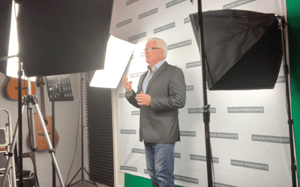
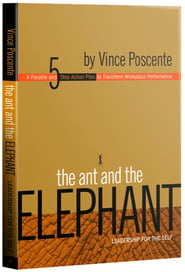
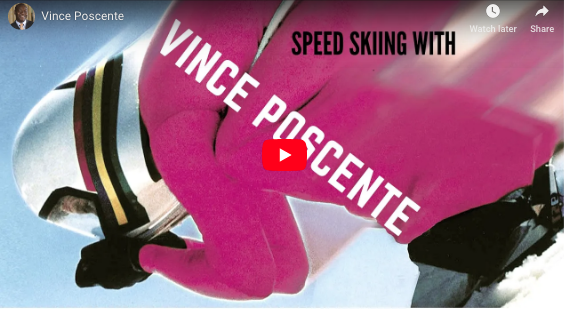
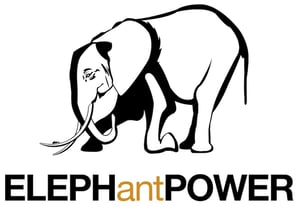 You have one mind, but it is separated into two distinct functions—the objective and the subjective mind. In other words, the conscious and the
You have one mind, but it is separated into two distinct functions—the objective and the subjective mind. In other words, the conscious and the 
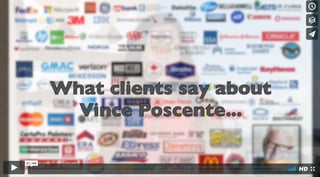
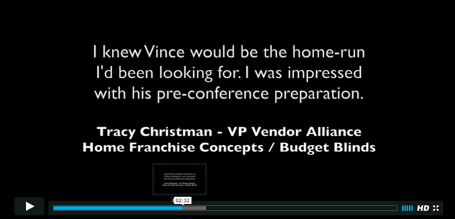
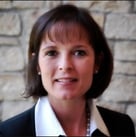

 What does it take to write a good subject line? Simple. Your noggin.
What does it take to write a good subject line? Simple. Your noggin.